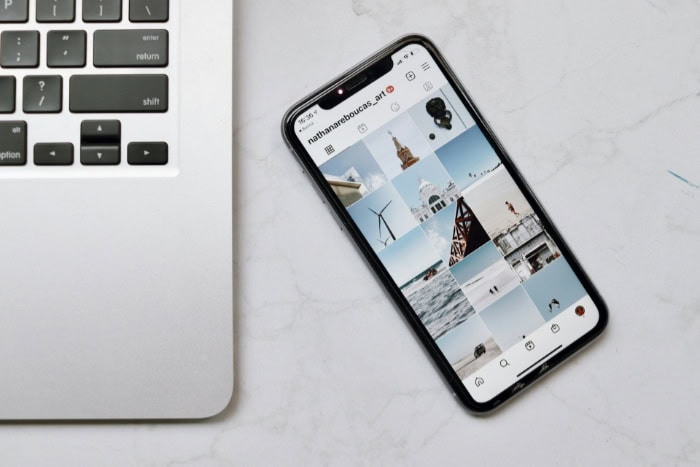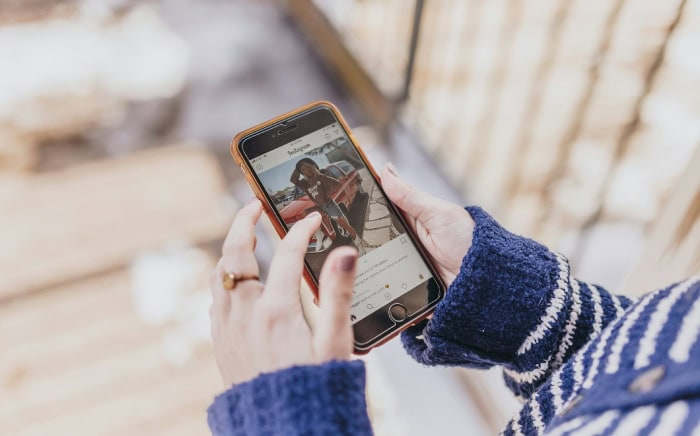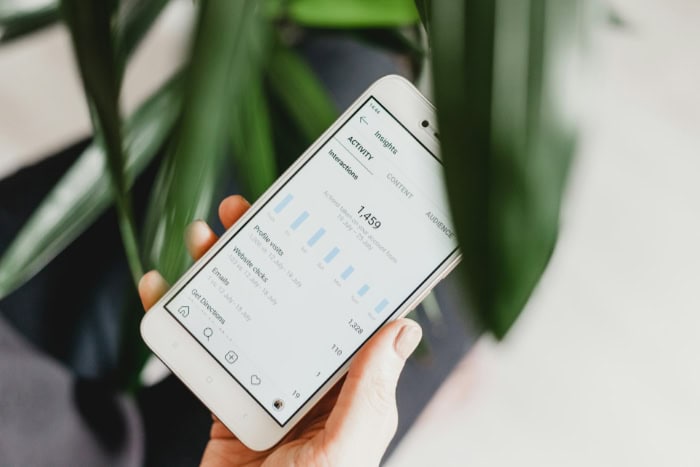Best Time to Post on Instagram: Maximize Your Reach

Timing is everything on Instagram. Posting when your audience is most active can dramatically boost your engagement, visibility, and growth.
While the platform's algorithm favors recent content, simply throwing posts online randomly won't maximize your reach. Finding your ideal posting schedule requires balancing general trend awareness with your unique audience habits.
Many businesses struggle with this balance, posting excellent content that gets buried because it appeared when followers weren't scrolling. Others waste hours guessing optimal times instead of using data to inform their strategy.
The difference between posting at peak versus off-peak hours can mean hundreds or thousands of missed interactions.
Understanding Instagram's Algorithm and Peak Engagement
Instagram's algorithm evaluates several factors when deciding which posts to showcase. Recency plays a crucial role; newer posts typically receive priority over older ones.
The platform also considers engagement rates, including likes, comments, saves, and shares, as signals of content quality. User behavior patterns matter too; the algorithm tracks relationships between accounts and prioritizes content from profiles users interact with regularly.
The algorithm also analyzes how long users spend viewing a post, how quickly engagement accumulates after posting, and the types of content individual users prefer. These factors combine to create a personalized feed for each user, making timing an essential component of your strategy.
Global Peak Hours
While audience behavior varies across niches, certain timeframes consistently show higher engagement rates across the platform. Midday hours from 10 AM to 3 PM often perform well as people check their phones during lunch breaks or downtime.
Evening hours between 6 PM and 9 PM also show strong engagement when many users have finished work or school and are relaxing.
Weekdays and weekends display different patterns. Tuesday through Thursday typically show steady engagement, while Friday mornings have emerged as particularly effective posting times across industries.
Weekends often work well for lifestyle, food, and travel content but may show lower engagement for professional or business content.
Different time zones can complicate global reach. If your audience spans multiple regions, consider posting during overlapping active hours or focusing on your primary geographic audience.
Worst Times to Post
Certain timeframes consistently underperform across most accounts and industries. Early mornings between 6 AM and 9 AM often show minimal engagement as people are rushing to start their day.
Late nights from 11 PM to 2 AM typically perform poorly as most users are sleeping or winding down.
However, these “rules” have exceptions. For example, fitness accounts might find early morning posts effective as workout enthusiasts check for motivation.
Similarly, entertainment accounts might see engagement spikes late at night when people are browsing before sleep.
The most reliable approach combines general timing guidelines with specific data from your own account. Instagram's built-in analytics provide valuable insights about when your particular followers are most active, allowing you to refine your posting schedule based on actual audience behavior rather than general recommendations alone.
Tailoring Timing to Your Audience

While general peak hours provide a solid starting point, truly effective Instagram scheduling requires understanding your specific audience's online habits. General timing recommendations might fall flat if they don't align with your followers' actual behaviors.
Customizing your posting schedule based on who your audience is, where they live, and what content they prefer can dramatically improve your engagement rates.
Demographic Considerations
Different audience segments follow distinct daily routines that affect when they browse social media. Professional audiences typically check Instagram during specific windows: morning commutes (7-9 AM), lunch breaks (12-2 PM), and evening downtime (6-8 PM).
Content targeting these users performs best when aligned with these natural breaks in their workday.
Students show different usage patterns, with higher activity during after-school hours (3-6 PM), later evenings (8-11 PM), and more consistent weekend browsing. During school holidays and summer breaks, their active hours shift significantly, requiring adjusted posting schedules.
Parents represent another distinct segment with unique browsing habits. They often check social media early in the morning before family responsibilities begin, during naptime for those with young children, and later evenings after bedtime routines conclude.
Content targeting parents might perform best around 9 PM when household activities typically wind down.
Younger audiences (teens and young adults) generally maintain later schedules, with peak engagement occurring in the afternoon and extending into late evening hours. They also show stronger weekend engagement compared to older demographics.
Geographic Adjustments
Followers scattered across different time zones require thoughtful scheduling strategies. For accounts with primarily local followers, timing posts to local peak hours makes perfect sense.
However, accounts with international audiences face more complex decisions.
One effective approach involves identifying your largest geographic clusters of followers and timing posts when these major audience segments overlap in activity. For example, posting at 8 AM Eastern Time might capture morning viewers in North America while reaching evening audiences in Europe.
Another strategy targets your most valuable geographic market rather than trying to please everyone. If analytics show your European followers convert at higher rates than others, prioritizing their peak hours might prove most beneficial despite potentially missing other regions.
Niche-Specific Patterns
Different content niches show distinct engagement patterns worth considering. B2B accounts typically perform best during standard business hours, particularly Tuesday through Thursday mornings when professionals are most receptive to industry content.
Early-week posts often outperform Friday content when professional attention begins shifting toward weekend plans.
Lifestyle and entertainment brands see almost opposite patterns, with strongest engagement during evenings and weekends when audiences seek inspiration and relaxation. Fashion and beauty content often peaks on Fridays as people plan weekend outfits and social activities.
Food accounts typically see engagement spikes around mealtimes, with recipe content performing especially well on weekend mornings when people have time to cook. Fitness content often performs best early mornings and early evenings, aligning with typical workout schedules.
Travel content shows strong weekend engagement when people dream about future trips, while Monday posts often perform poorly as audiences readjust to work routines. Retail and e-commerce accounts typically see stronger engagement on paydays (often Fridays) and during evening browsing hours.
Monitoring performance patterns within your specific niche and comparing your results against competitors can reveal valuable timing insights unique to your content category.
Optimizing Timing by Content Type

Instagram offers various content formats, each with unique consumption patterns that affect ideal posting times. Users interact differently with Reels, Stories, carousel posts, and Live videos based on their available time, attention span, and browsing environment.
Reels
Reels tend to perform best during evening hours, particularly between 8 PM and 10 PM when users have more leisure time for entertainment. During these hours, people are typically relaxed, finished with daily responsibilities, and looking for quick entertainment before bed.
The algorithm also gives Reels extended visibility beyond your immediate followers, making timing less critical than with other formats.
Weekends show particularly strong Reels engagement as users have more time for casual browsing and entertainment consumption. Saturday afternoons and Sunday evenings often yield excellent results for entertaining, light-hearted Reels content.
The short, engaging nature of Reels makes them perfect for moments when users are looking to be entertained rather than educated.
For Reels with educational content or tutorials, midday hours often work better when users have the mental bandwidth to process information. Posting Reels consistently at your identified peak times helps train the algorithm to expect engagement, potentially boosting distribution of future content.
Stories
Instagram Stories excel during transition periods in users' daily routines, particularly morning and evening commute times. The 7 AM to 9 AM window captures people checking social media while starting their day, often during breakfast or transit.
Similarly, the 5 PM to 7 PM window reaches users during evening commutes or dinner preparation.
Stories' ephemeral nature and quick consumption format make them ideal for these brief attention moments. Users can quickly tap through Stories while waiting for coffee, riding public transportation, or taking short breaks.
The 24-hour lifespan means Stories should align closely with your audience's daily routine.
Posting Stories during these transition windows increases the likelihood they'll appear at the front of users' Stories queue. For maximum visibility, consider posting multiple Stories throughout the day rather than all at once, maintaining a consistent presence in followers' feeds without overwhelming them.
Carousels/Images
Static feed posts and carousel galleries perform best during periods when users have time for more thoughtful browsing and engagement. Lunch breaks between 11 AM and 1 PM provide an excellent window when people have time to read captions, swipe through multiple images, and leave meaningful comments.
Carousels particularly benefit from these longer browsing sessions as they require more user interaction to view all content. The swipe-through format encourages deeper engagement, which the algorithm rewards with increased visibility.
Midday posting allows your carousel content to accumulate engagement throughout the afternoon, signaling quality to the algorithm.
For image posts with detailed captions or educational content, midweek mornings often perform well when users are mentally fresh and receptive to information. Posts requiring careful reading or consideration should avoid late evening hours when user attention spans typically shorten.
Live Videos
Live videos require special timing consideration since they demand real-time audience participation. Successful Lives typically occur during high-activity windows when substantial portions of your audience can tune in simultaneously.
Weekday evenings between 7 PM and 9 PM often work well across industries, as does Sunday evening for lifestyle content.
Pre-announcing your Live sessions is essential for maximizing attendance. Promoting your upcoming Live 24-48 hours in advance through Stories, feed posts, and even email allows followers to plan around your broadcast.
Including a compelling reason to attend live, such as limited-time offers or Q&A opportunities, increases participation rates.
The timezone spread of your audience significantly impacts Live video success. For global audiences, consider running recurring Lives at rotating times to accommodate different regions, or focus on times that work for your most engaged geographic segments.
Some creators find success with shorter, more frequent Lives rather than longer sessions that attempt to capture all followers simultaneously.
Repurposing Live content afterward as highlights, feed posts, or IGTV videos helps capture value from users who couldn't attend the original broadcast. Analyzing attendance patterns from previous Lives provides valuable data for scheduling future sessions more effectively.
Analytical Methods to Refine Your Strategy

Moving beyond general recommendations requires data-driven refinement of your posting schedule. While industry benchmarks provide useful starting points, your specific audience might behave differently.
Implementing analytical approaches helps identify your optimal posting times based on actual performance data rather than assumptions.
Instagram Insights
Instagram's native analytics tool offers valuable data directly within the platform for business and creator accounts. The “Insights” tab provides detailed information about when your followers are most active on the platform.
Located under the “Audience” section, the activity graph shows hourly and daily patterns specific to your followers.
Pay special attention to the “Most Active Times” graph, which displays peak activity periods throughout the week. Note the consistency or variation across different days; some accounts see stable patterns while others experience dramatic shifts between weekdays and weekends.
Using these insights, you can align your posting schedule with natural peaks in your audience's activity.
Beyond simply identifying active times, correlate this data with your actual post performance. Review your top-performing posts from the past few months and note when they were published.
Look for patterns where higher engagement consistently occurs during specific timeframes. Sometimes the theoretical best time (when most followers are online) differs from the practical best time (when followers actually engage).
The relationship between posting time and content type also becomes visible through Insights analysis. You might discover that educational content performs better in mornings while entertaining content gets more traction in evenings.
Regularly reviewing these patterns allows for continuous refinement of your content calendar.
Third-Party Tools
While Instagram Insights provides basic timing data, third-party analytics platforms offer more sophisticated analysis and scheduling capabilities. Tools like Sprout Social, Hootsuite, Later, and Buffer provide detailed metrics that help optimize your posting schedule.
Sprout Social offers heat maps showing engagement patterns across different times and days, making patterns immediately visible. The platform also suggests optimal posting times based on historical performance data from your account.
Hootsuite similarly analyzes past performance to recommend ideal scheduling windows for different content types.
Later specializes in visual planning and provides “Best Time to Post” features that analyze when your specific audience engages most. The platform allows you to schedule content weeks in advance based on these optimal windows.
Buffer offers similar functionality with its “Optimal Timing Tool” that suggests personalized posting schedules.
Many of these platforms also enable competitive analysis, showing how your posting strategy compares to similar accounts in your niche. Identifying gaps in competitors' posting schedules might reveal opportunities to reach audiences when similar content is scarce.
The automation features of these tools ensure consistency in your posting schedule once you've identified optimal times. Setting up a regular cadence helps train both the algorithm and your audience to expect your content at certain times, potentially boosting long-term engagement.
A/B Testing
The most precise way to determine your ideal posting times involves systematic experimentation through A/B testing. Rather than relying solely on analytics data, create controlled experiments to directly compare performance across different posting slots.
Start by identifying several potential time slots based on your preliminary analytics. For example, you might test posting at 9 AM versus noon versus 6 PM on weekdays.
Maintain consistency in content quality, topics, and formats across these test posts to isolate timing as the primary variable.
Run your test over a 2-4 week period to gather sufficient data while minimizing seasonal fluctuations. Alternate between your test times systematically; for instance, posting Monday at 9 AM, Wednesday at noon, and Friday at 6 PM in week one, then rotating these slots in subsequent weeks.
Track multiple metrics during your testing period. While engagement rates (likes, comments, shares) provide immediate feedback, also monitor impressions, reach, profile visits, and follower growth.
Sometimes a post with moderate engagement might actually drive more profile visits or followers, indicating different but valuable forms of success.
Document your findings in a spreadsheet to identify clear patterns. Look beyond simple averages to spot day-specific trends; perhaps Tuesday mornings consistently outperform Thursday mornings despite similar overall audience activity levels.
Once you've identified your top-performing time slots, implement them as your standard posting schedule for another month while continuing to monitor results. Audience behaviors change over time, making ongoing testing and refinement necessary for maintaining optimal performance.
Conclusion
Finding the perfect Instagram posting time isn't a one-time task but an ongoing process of refinement. The most successful Instagram strategies combine algorithmic awareness, audience analysis, content-type optimization, and continuous testing.
While general trends provide useful starting points, your specific audience's behaviors ultimately determine your optimal posting schedule.
Remember that Instagram's algorithm prioritizes recency alongside engagement, making timing a crucial factor in content visibility. Peak engagement windows differ across demographics, geographic regions, and content niches.
Professional audiences engage differently than students, global followers require timezone considerations, and B2B content performs differently than lifestyle content.
Different content formats also benefit from strategic timing adjustments. Reels tend to perform best during evening leisure hours, while Stories capture attention during commuting windows.
Carousel posts shine during lunch breaks when users have time to swipe and engage, and Live videos require pre-announced scheduling during high-activity periods.
Your analytics provide the most valuable guidance for refining these general principles. Instagram Insights reveals when your specific followers are most active, third-party tools offer deeper analytical capabilities, and systematic A/B testing provides definitive answers about what works for your unique account.
Perhaps most importantly, avoid treating your posting schedule as fixed and permanent. Audience behaviors evolve, platform algorithms update, and seasonal patterns shift engagement windows throughout the year.
The most effective Instagram timing strategy embraces flexibility, regularly reassesses performance data, and adjusts posting times to match your audience's changing habits. By treating your posting schedule as a dynamic, data-informed aspect of your Instagram strategy, you'll consistently maximize your content's potential for engagement and growth.


